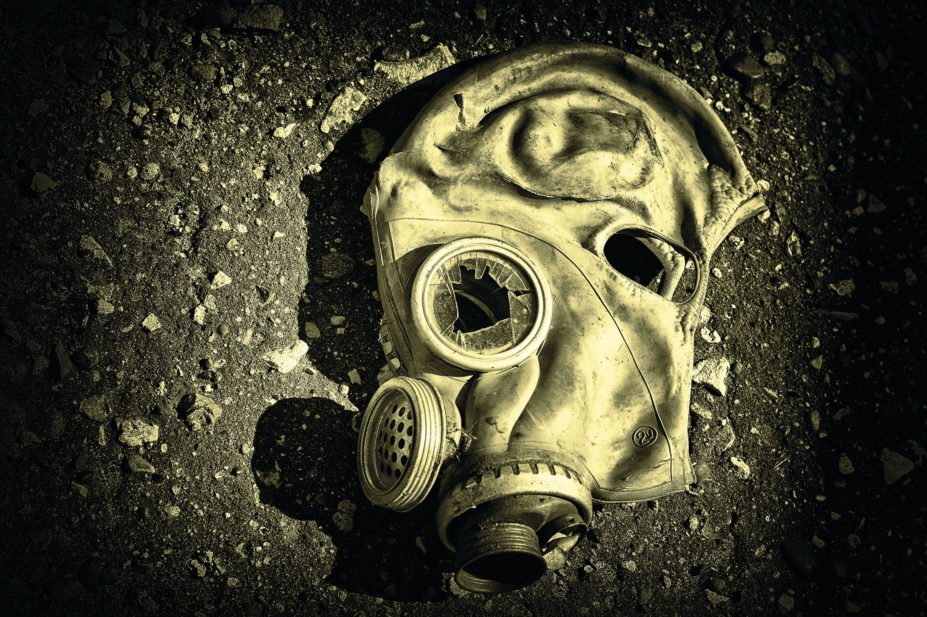
Shutterstock.com
Twenty years ago, on 29 April 1997, the United Nations Chemical Weapons Convention came into effect, outlawing the production, stockpiling and use of chemical weapons and their precursors. Despite this global ban, nerve agents have continued to be used in the indiscriminate killing of civilians, most recently with the deaths of nearly 100 Syrian adults and children in a chemical attack on Khan Sheikhoun on 4 April 2017. Four years ago, in an even more horrific mass murder, an estimated 1,400 Syrians were killed by nerve gas in the Ghouta area of Damascus.
The world generally accepts that these war crimes were carried out by the military forces of Syrian President Bashar al-Assad, despite denials by both the Syrian regime and its Russian allies. (The Russian government even claimed that the most recent incident was orchestrated by Syrian rebels with the aim of drawing foreign powers into the civil war.)
The chemical weapon used in these attacks has been identified as sarin, an organophosphorus nerve gas that was developed in Germany at the start of the 1939–45 war. During the war the German military stockpiled 30 tons, but thankfully never used it. (However, the company that developed it, IG Farben, also went on to produce the cyanide-based Zyklon B, used to gas six million Jews and other people deemed “undesirable” by the Nazis during the Holocaust.)
The name sarin is derived from the surnames of its inventors — (Gerhard) S(chrader), (Otto) A(mbros), (Ernst) R(üdiger von Brüning) and (Hermann van der L)IN(de). The name preferred by the International Union of Pure and Applied Chemistry is (RS)-propan-2-yl methylphosphonofluoridate.
Sarin is a highly volatile liquid. When pure it is colourless and odourless and therefore hard to detect. However, it is rarely used in a pure form, and a smell of mustard or burned rubber can alert victims to its presence — not that they can often do much about it.
Sarin is many times more lethal than the chemical weapons employed by Germany in the 1914–18 war, such as chlorine, cyanide, phosgene and mustard gas. Unless antidotes are immediately available and quickly administered, victims can die within minutes of direct inhalation. Death results from asphyxia due to loss of ability to control the muscles involved in breathing.
Sarin exerts its lethal effects by inhibiting the enzyme acetylcholinesterase (AChE) and thereby preventing the degradation of the neurotransmitter acetylcholine (ACh) after it has acted at neuromuscular junctions to stimulate muscles. By inhibiting AChE, sarin causes a build-up of ACh so that nerve impulses are continually transmitted.
Exposure to sarin has horrendous consequences. The first symptoms are a runny nose, tightness in the chest and constriction of the pupils. These are soon followed by difficulty breathing, nausea and drooling. A continuing loss of bodily functions leads to uncontrollable vomiting, defecation and urination, followed by twitching and jerking. Ultimately, the victim becomes comatose and suffocates in a series of convulsive spasms.
The usual antidotes are atropine, pralidoxime and diazepam. As an antagonist to muscarinic ACh receptor, atropine can relieve some of the symptoms of poisoning, although it does not counteract the muscular symptoms. Pralidoxime has the effect of reactivating AChE. And diazepam is used as an anticonvulsant. But sarin is so rapidly lethal that only victims with mild exposure are likely to survive long enough to benefit from antidotes.
You may also be interested in
The importance of diverse clinical imagery within health education

Entrustable professional activities: a new approach to supervising trainee pharmacists on clinical placements
